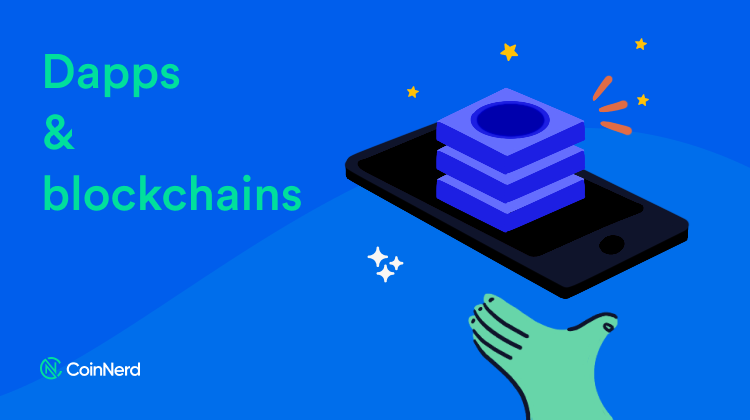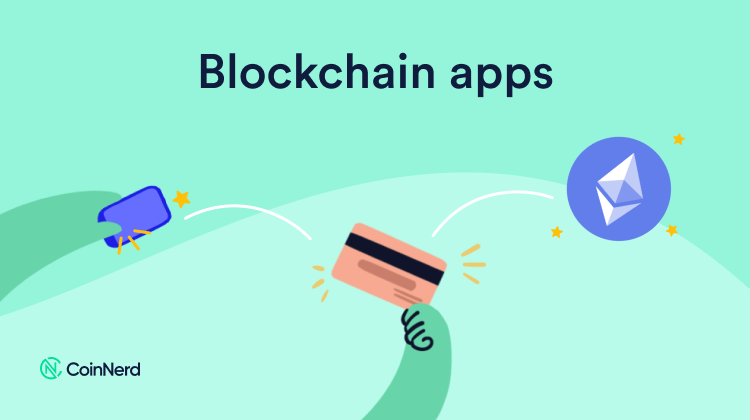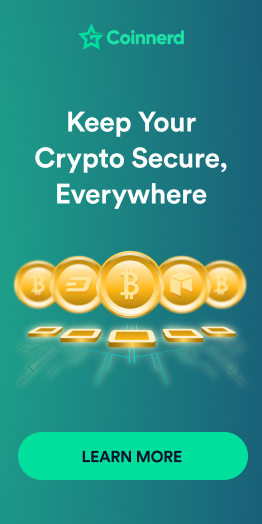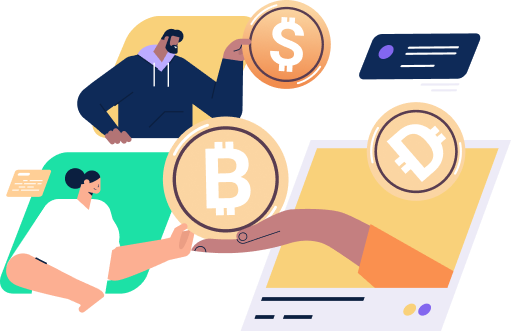What Are dApps? Everything There Is to Know About Decentralized Applications
Cryptocurrencies have come a long way since the days of Bitcoin. Bitcoin was the first crypto to be created, and a few years later, Ethereum took the stage, bringing in smart contracts that enabled a new age in the blockchain. With the coming of smart contracts, decentralized applications (dApps) were not far behind.
Developers began to create software and applications on top of the blockchain that would assist general users in accessing the full power of the blockchain without having to understand the low-level code used to create the chain. This article will go deeper into decentralized applications, their use cases, and how they have helped blockchains grow into a multibillion-dollar industry in less than a decade.
What Are Decentralized Applications?
Decentralized applications or dApps are applications or software that have been built on a decentralized network such as Ethereum, Solana, Binance, Polkadot, among many others.
Decentralized applications combine the power of smart contracts and front-end design to allow users who do not understand the technical part of the network to access the full power of the blockchain.
At the center of dApps are smart contracts. These apps cannot work or deliver any value without smart contracts. Hence to understand a Dapp and its operation, it is essential to understand what a smart contract is and how it works.
Smart Contracts
A smart contract is a program that started and still runs on the Ethereum blockchain. Recently, new blockchain platforms that harness the power of smart contracts using their native program languages have been created. Developers on Ethereum use Solidity and Vyper programming languages to develop their smart contracts.

These software programs contain code that defines the functions and data that dictate how a given DApp is supposed to work. Smart contracts are automatically executed when certain conditions are met. The characteristics of a smart contract are automatically passed on to the DApp since it acts as a house for its software. Certain unique features define smart contracts and how they work. Some of these features of smart contracts include:
Permissionless
The idea of being Permissionless is a popular term in software engineering. It means that any person who has the technical know-how and enough Ethereum to pay for gas fees can create and deploy smart contracts on the Ethereum network and any other chain. So, in essence, you do not need permission from a central entity to do this.
Composability
Composability is another name for flexibility of scalability. Smart contracts can be used to call other smart contracts within the code. This allows dApps to communicate with each other and promote interoperability.
In recent years, interoperability has been achieved across various blockchain networks, something that has led to the massive growth of decentralized applications. This is because, with cross-chain interoperability, dApps can be deployed across various blockchains with different underlying codes.
Open Source
Smart contracts are open-source, which means that they are public, and anyone can view and audit them. In the same way, code for dApps is public, and anyone can scrutinize the source code for any given app to understand how it works. This is why crypto is said to have fully merged technology with finance.
Deterministic
Smart contracts perform the same function automatically despite whatever environment they are put in. As long as the resources and conditions needed to execute the code are available, a smart contract will run. This functionality is also true for dApps since it is inherited from the smart contract engine.
Isolated
Smart contracts are built and executed in a virtual environment called the Ethereum Virtual Machine. This means that if the smart contract is faulty or has bugs, it will not affect the normal function of the entire blockchain network. So, many people can create and deploy smart contracts and dApps on the blockchain without affecting the integrity and normal flow of the network.
Zero Downtime
The dApp will always be up since the Blockchain network does not have any downtime. This means that once the smart contract goes live, it cannot be changed without affecting the entire functionality of the dApp.
However, in this case, the program will continue running. For example, DeFi protocols (which are essentially dApps) have been hacked for millions of dollars in crypto assets. However, the smart contracts continue running as normal even after the protocols have been breached.
The only way for the development teams to fix the issue is to shut down the DApp user interface to avoid more losses as they quickly create a new smart contract with better security features.
Privacy in Decentralized Applications
dApps provide true privacy to users. In regular apps on the play store and IOS or even websites, users need to sign up with their details and names, potentially exposing them to millions of hackers lurking on the internet.
dApps are also resistant to censorship and have no single entity that can block users from creating and submitting transactions. While this is good for users who can be able to get more clarity on the types of dApps they are interacting with, it also poses a huge problem with hackers.
Malicious parties can strip down the smart contract code of many dApps and scrutinize it for vulnerabilities. This has resulted in over $14 billion lost to hacks on the blockchain network.
How Do Decentralized Applications Work?
Ethereum was the first blockchain to allow dApps to exist, and this is one of the main reasons for the success of the Ethereum network. Gavin Wood developed the Ethereum Virtual Machine (EVM) that could simulate any computer algorithm.
Right now, any program coded or created, and tested on the EVM is called a smart contract. It can be programmed for the EVM and then executed by the Ethereum computer network. This is how decentralized applications work. In essence, they can only be executed on top of the blockchain in which they are built.
The only limitation present for decentralized applications built on top of Ethereum is the number of computations required to complete a smart contract. Ethereum charges a fee for computing a smart contract code called Gas.
Gas is limited, and a smart contract is automatically terminated when it runs out of Gas. This hinders the usage and power of smart contracts on the Ethereum network. In fact, in recent years new blockchains that offer smart contract capabilities have emerged.
These chains are trying to address the inefficiencies and high costs associated with Ethereum. Solana, one of the leading chains right now, has called itself “Ethereum Killer” as it hopes to replace Ethereum in the smart contracts game.
The Difference between Smart Contracts and dApps
Smart contracts and dApps are two different things, but they work together to form one complete product. The difference between a DApp and a smart contract is that a DApp is an application that is necessary to make it easy for users to interact with blockchains. In contrast, smart contracts are the engines that bring life and functionality to dApps by connecting them to the EVM.
Ethereum has thousands of dApps, including marketplaces, DEXs, and DeFi protocols. Other blockchains have more sophisticated smart contracts, which allows dApps built on those networks to have more functionality and more range. One such example is the EOS blockchain. dApps built on the EOS network are tested on the EOS virtual machine (EOS VM) and have a lot of capabilities.
How Do I Use Decentralized Applications?
To use dApps, a user must have a cryptocurrency wallet that allows them to connect to the blockchain. For the Ethereum network, the most used cryptocurrency wallet is a Metamask.

Other chains have wallets that users can use to connect to decentralized applications on those chains. However, for this article, we shall use Ethereum since it is the most popular network and has the most dApps. Additionally, Ethereum is one of the most used networks for volume and trading activity. Here are the steps on how to use a DApp:
Get an Ethereum Account
Get an Ethereum account by heading over to Metamask and creating an account. When you create an account on Ethereum, make sure you secure your seed phrase by storing it offline. A seed phrase is a 12 or 24-word phrase that ensures the security of your wallet.
Every Ethereum wallet has two addresses; a public address and a private key. The private address can be likened to a password or pin code of a bank account. If you lose the private key, you lose your funds.
And if you lose your seed phrase, you lose all the accounts associated with that exact phrase. Hence, the seed phrases and the private keys must be kept in a safe place that is not online.
Buy some Ethereum (ETH)
After creating an account, retrieve a public address. After that head over to Coinbase or Binance exchange, where you will be able to buy Ethereum. Coinbase is one of the most popular cryptocurrency exchanges in the United States. For people living outside the United States, Binance is the most popular cryptocurrency exchange in the world.
Transfer the Crypto to Your Wallet
After buying Ethereum, withdraw the ETH tokens to the public address of your wallet. By doing this, you will have funded your wallet with the Ether tokens, which are the native tokens of the Ethereum network. Ether (ETH) is also used to pay gas fees for every transaction that is executed by the EVM.
Start using the dApps
After getting Ethereum, you can now head over to different decentralized applications-tracking websites like DApp Radar and find good decentralized applications to test out. You can also take advantage of many decentralized applications where users can earn passive income by depositing their assets.
Examples include Compound, Yearn, Uniswap, and MakerDAO. Users only need to deposit their crypto assets, and they will earn a lucrative annual percentage yield (APY) on the deposited crypto assets.
Top dApps in the Cryptoverse
There are many decentralized applications on the blockchain. On Ethereum alone, they range into the thousands. Examples of decentralized applications on Ethereum include Uniswap, Dark Forest, Pool Together and Foundation, and many more.
Because of the extensive development of the Ethereum network, dApps have sprouted up in every niche of the Ethereum economy. Some of the categories in which dApps are now most active include finance, arts and collections, gaming, and technology. Here are some popular options:
Finance
Examples of the top decentralized apps in finance include Aave, Compound, Oasis, Uniswap, 1inch, and DYDX.
Arts and Collections
Examples of top decentralized applications in Arts and Collectibles include Foundation, Super Rare Nifty, OpenSea, and Rarible.
Gaming and Virtual Worlds
Examples of leading crypto decentralized applications in both gaming and Metaverse include Decentraland, Axie Infinity, Gods Unchained, and Crypto Voxels.
Technology
In the technology sector, the Ethereum Name Service is one of the leading decentralized applications on the Ethereum network. It is responsible for giving user-friendly names for Ethereum addresses, which can be used on decentralized sites. Gitcoin, Radical, and Brave Network are some of the other top technology-based decentralized applications.
Conclusion
Many people continue to argue as to why cryptocurrencies are not going to be around for a long time. However, the Crypto space continues to grow without care as thousands of decentralized applications get released into the market daily.
Each decentralized application allows many users of the blockchain to benefit immensely from protocols that other companies have developed. Some beneficial financial products that can be accessed through decentralized applications include yield farming, Defi lending, borrowing, and liquidity mining.
With this opportunity presented by dApps, users can deposit their crypto assets and begin earning lucrative APYs that enable them to live comfortably, making handsome returns every week. This is the power of decentralized applications.
* We hope this information will help you in your investment process, but this is not investment advice. Every investment carries risk, especially in this industry, so DYOR before making a decision.






